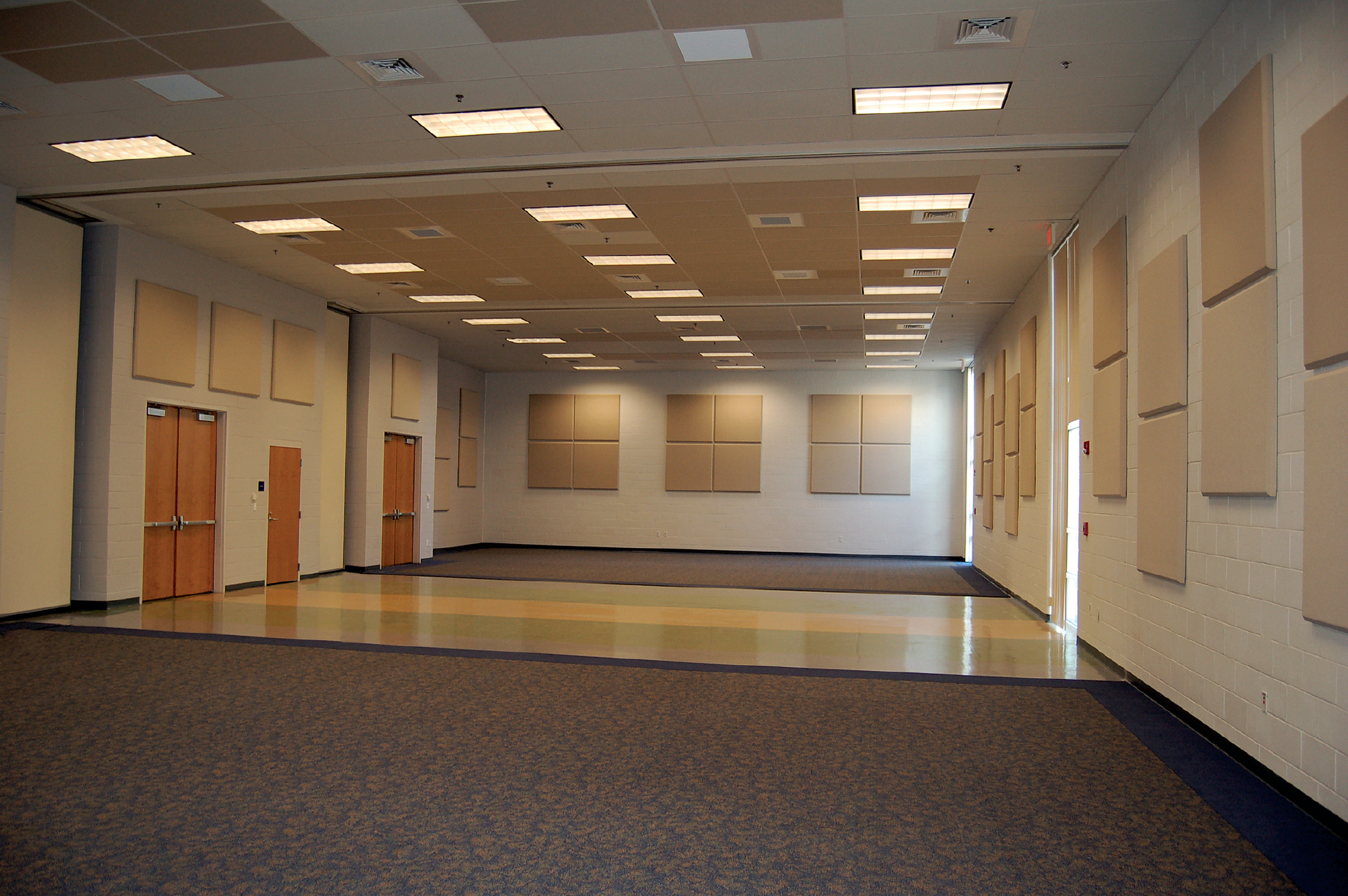Educational Facilities

“Students in today’s classrooms are unable to understand 25 to 30 percent of what their teacher said because of excessive noise and reverberation. – The Institute for Advanced Classroom Hearing
No matter the age of the student or the subject of the lesson, the first crucial element to learning anything is being able to hear it. If a classroom wasn’t built with acoustics in mind, it could be hard to understand the message. When people can’t hear, they lose focus and their attentions start to wane.
Classrooms, like many modern spaces, are often designed only with a certain “look” in mind or perhaps worse still, with only a slim budget goal to meet. With these restrictions in place, usually the acoustics of a space are not considered until after the space is complete. In smaller spaces where speech and/or music are the main focus, the most important thing to tackle is to control reverberation. Reverb is often confused with echo; the difference being that an echo is when you hear only one direct reflection from a single wall or other object – while reverberation is hearing potentially infinite reflections off any/all surfaces in a given space. To think of it another way, you hear an echo when you yell across a canyon, you hear reverberation in a tiled bathroom.

How Do You “Fix” the Classroom’s Acoustics?
Let’s say for instance you have a classroom made entirely of hard, reflective construction materials like drywall, concrete, drop-tile ceiling, etc. and it’s also filled with fiberboard desks, chairs, and a large dry erase board or screen. This is probably one of the worst scenarios you can have in a average-sized room – luckily, no matter the severity, the solution is the same – Absorption. By placing acoustically-minded absorption materials in a space the area of reflective material is reduced and sound waves are able to be absorbed or redirected more evenly. This results in the space sounding more natural, being more comfortable for occupants, and greatly improves speech and music intelligibility.
What About Auditoriums, Gymnasiums, and Larger Classrooms?
In larger room multi-purpose rooms, particularly spaces like gymnasiums or auditoriums the most important aspect to address for speech intelligibility is reverberation time, commonly referred to as “RT” or “RT60”. This is the amount of time it takes an original sound signal to drop 60 decibels. For reference, this is the difference between a normal conversation tone at 3-5 feet and basically silence. The larger the space the more time it takes the original signal to move around and return a reflection – this means a higher RT, which means speech, and especially music, are more difficult to distinguish and hear clearly. According to the American Speech-Language-Hearing Association: “Classrooms should have RTs in the range of 0.4-0.6 seconds, but many existing classrooms have RTs of one second or more.” Although ~0.4-0.6 seconds is an ideal RT for smaller, easier to control spaces – many larger spaces an original RT typically reach the range of ~3-3.5 seconds; getting the finished RT down to ~1.3 seconds is an acceptable goal and will definitely make a noticeable difference.

Ready For More Information? We Can Help!
Want to know more about your options? Auralex is the industry-leading Acoustics company and one of the oldest and most respected companies in the business. Since 1977, we have helped thousands of people with their unique acoustic needs in all kinds of facilities from auditoriums to bedroom studios. Our highly trained staff is available for phone support to answer questions. If you have some basic measurements and information about your space try our RLX Room Layout eXpress App!
Contact us today to see what we can do for you!

